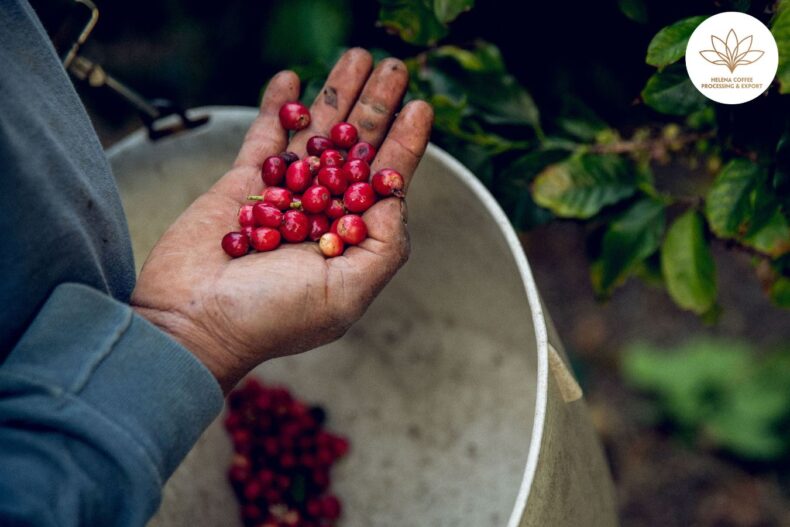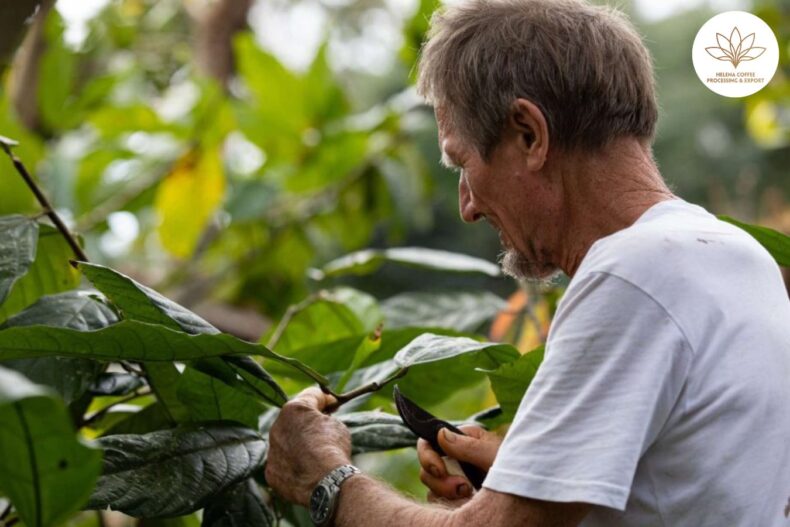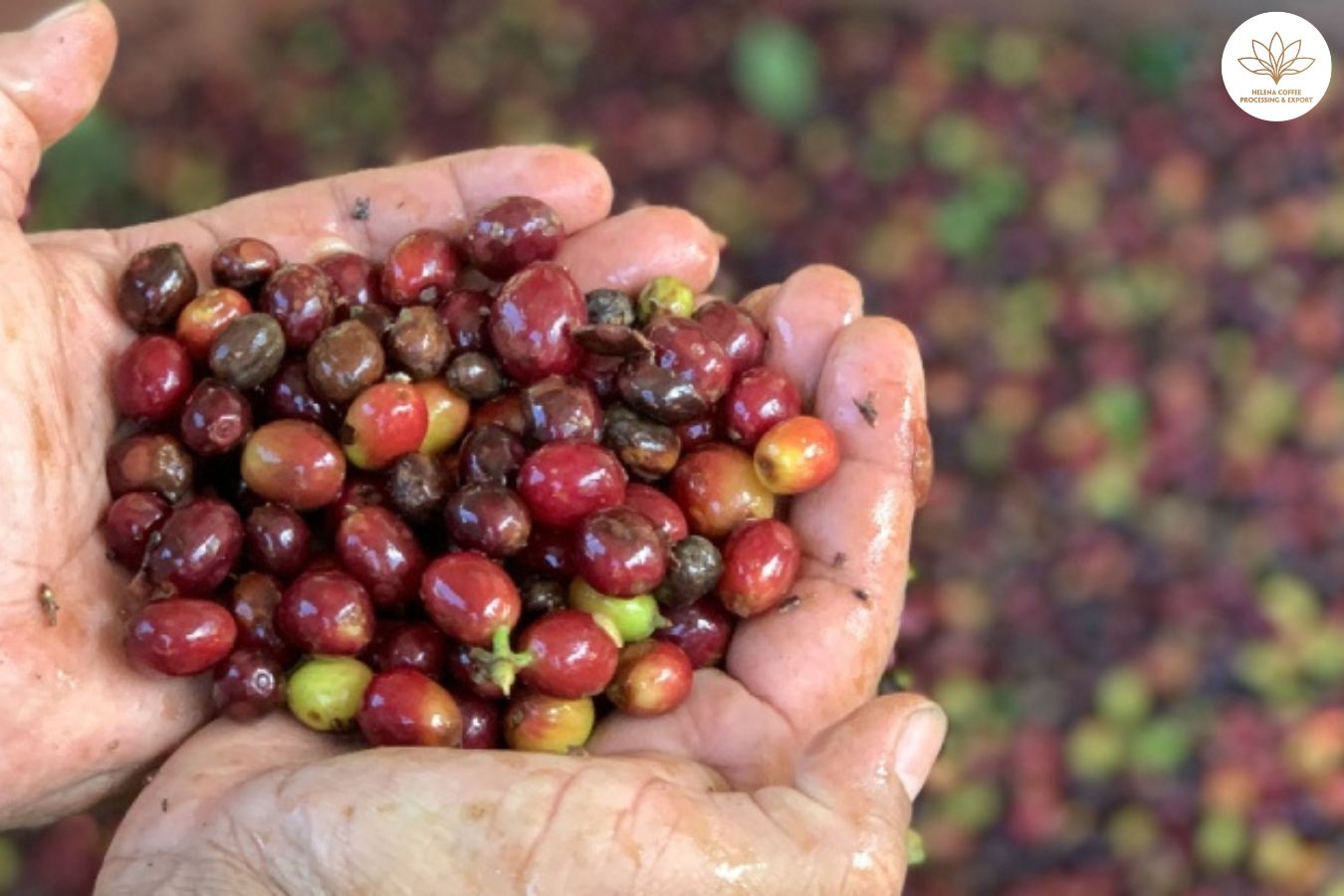
Indigenous communities are one of the least represented and most forgotten groups in the coffee sector; However, the indigenous population of Colombia alone is estimated to be 1.5 million people, representing around 3.4% of the total population. In rural areas, many of these communities depend on the coffee industry for their livelihood.
The traditional stories and cultures of indigenous people frequently speak of their unique heritage in coffee production, unlike other agricultural communities. In many cases, the broader coffee industry does not sufficiently take into account the challenges these groups face when selling their coffees.
Understanding the complex history of these communities is essential when it comes to talking about indigenously grown coffee in Colombia. To learn more, I spoke with Daniel Jaramillo, owner of Antioqueña de Cafés Especiales, and Lisardo Domico, a member of the Emberá Chamí indigenous tribe of Colombia. Keep reading and find out what they told me.
The history of colonialism in Colombia
Spanish settlers first arrived in Colombia at the beginning of the 16th century. European settlers often presented coffee to indigenous communities, including countries in Latin America, Africa, Asia and the Caribbean, as a profitable and usable crop.
Shortly after, the coffee arrived. It is believed that the first record of coffee production in Colombia appears in the book of the missionary priest José Gumilla in 1741.
Coffee production in many countries has an inherent link to colonialism but indigenous communities have arguably suffered the most severe forms of exploitation. In many cases, these groups were forced to leave their homelands to move to areas where coffee production was more profitable for colonial powers.
Even today, even though many of these former colonies have become independent, the structural problems caused by colonialism remain serious for indigenous coffee producers.
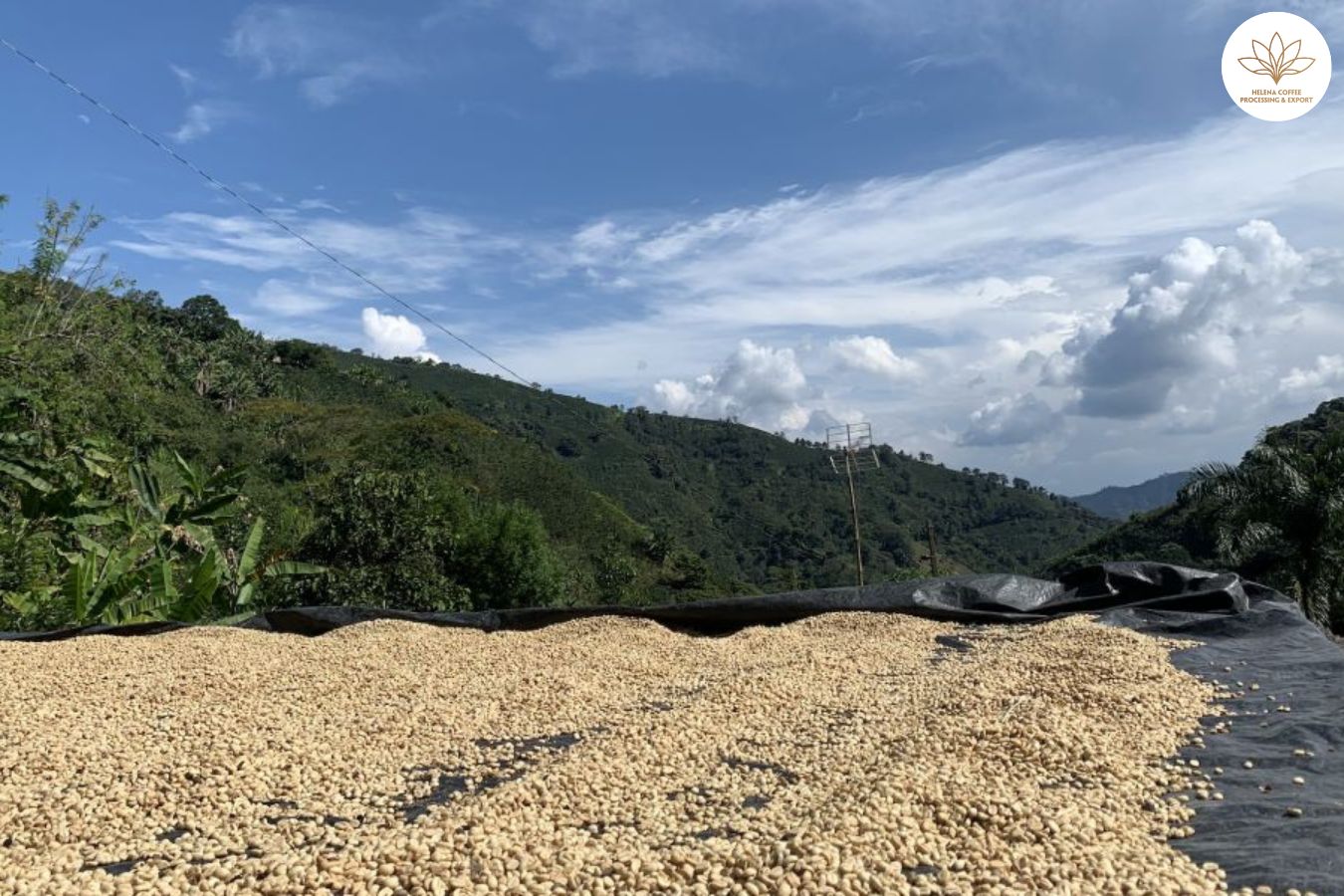
Of Colombia’s many coffee-growing regions, the Sierra Nevada de Santa Marta and the departments of Antioquia, Caldas and Nariño are home to several indigenous coffee-producing communities.
The Lisardo tribe is located near Ciudad Bolívar, in Antioquia, but the group actually originates from the Chocó department, in western Colombia. The Emberá are the third largest indigenous population in Colombia, with about 71,000 inhabitants.
Lisardo explains how coffee became an important crop for the Emberá tribe.
“When my tribe was expelled from Chocó and emigrated to Antioquia, we arrived at the coffee fields,” he says. “From there, we understood coffee as a commercial crop and a source of income for our community. Since then, we have adapted to the challenges of coffee production.”
Although this story is particular to the Emberá Chami tribe, each of Colombia’s indigenous coffee communities has their own personal experience with growing and selling coffee. Other indigenous tribes, such as the Arhuacos of the Sierra Nevada de Santa Marta and the Awá of Nariño, also began producing coffee due to colonialism.
How do the lasting effects of colonialism continue to affect indigenous peoples?
Although Colombia’s indigenous communities have become largely self-governed, coffee production remains vital to the subsistence of many of these people.
There are similar cases in several coffee producing communities around the world. Often, several generations of indigenous tribes continue to depend on coffee cultivation as their main source of income.
Unfortunately, many indigenous people continue to face problems inherited from existing colonial structures.
Value addition occurs mostly at the end of the supply chain, which is where the coffee is roasted and sold. This means that producers often receive disproportionately less money for their coffees, despite being part of the global coffee market.
The regulation of world coffee prices by large consuming countries means that producers often have little or no say over the prices they receive for the sale of their coffees. Although this is changing, producers are still at the mercy of price fluctuations, which are often beyond their control.
Many indigenous producers also depend on foreign companies that operate mills and processing facilities. Although they often provide credit to producers, this can force farmers to maintain fixed prices for several years.
All this prevents them from taking advantage of opportunities to increase their income. If the market price of coffee increases, producers remain tied to a lower price.
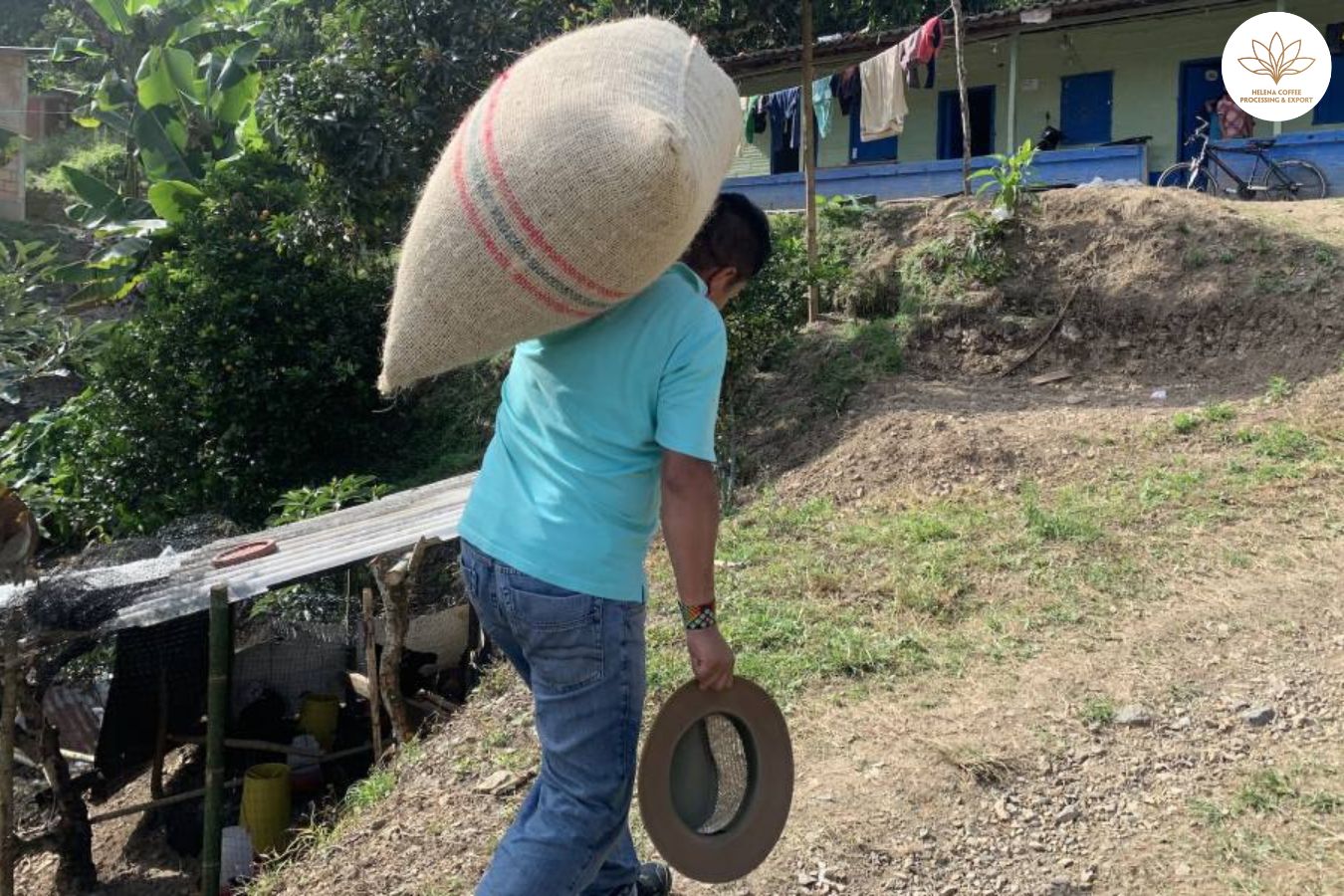
Fortunately, calls for market reforms and other social initiatives are encouraging farmers. More and more producers are beginning to recognize the value of their coffee, while gender equality initiatives are helping women achieve leadership positions in coffee production.
In some cases, indigenous communities can use coffee as a tool to prevent further exploitation, mainly derived from forced labor or human trafficking.
An example is the Doi Tung Development Project in Thailand, which supports indigenous coffee farmers.
The Chiang Rai region is part of the Golden Triangle: a border area between Thailand, Laos and Myanmar. Trafficking in opium, weapons, and people has dominated the history of this area; However, thanks to the project, indigenous farmers have received plots of land where they can live and grow coffee, which has allowed them to gain autonomy.
Challenges for indigenous producers
The main challenges faced by many indigenous coffee communities are lack of infrastructure and poor quality control practices.
Although indigenous communities are often autonomous and self-governed, they also often lack support from governments and third parties to increase their income.
Lisardo explains that indigenous groups usually sell their coffees in cherry because they do not have access to the adequate infrastructure to dry and process it.
“Indigenous communities have been selling their coffee as cherries for too long, which plunges them into a cycle of poverty,” he says.
“We failed to scale and reinvest in our farming community, which would allow us to dry our coffees and have more control over quality.”
This common lack of access to processing infrastructure ultimately creates barriers for many indigenous coffee communities seeking to increase their incomes. Lisardo’s tribe has worked hard to create relationships with buyers who recognize the potential of these producers.
Daniel is the owner of a Colombian coffee marketing company in Itagüí. He explains the importance of investing in infrastructure and education, especially when it comes to coffee quality.
“We established a relationship with the Emberá Chamí tribe that allowed us to invest in drying facilities,” he says. “The community can dry their coffees and sell them as parchment.” This means that farmers can receive higher prices because they have added value to the coffee after processing it.
Daniel says: “We also took this opportunity to teach the community the importance of quality and how they can get higher quality coffees.”
On the other hand, there may be transparency issues when purchasing coffees from indigenous communities as these groups are often vulnerable to unethical business practices.
In his experience working with indigenous communities, Daniel says they often lack financial knowledge. This is because these groups have very restricted access to educational resources and opportunities to reach national and international markets.
To solve these problems, it is important for coffee buyers to ask indigenous coffee farmers how they can help them. Without adequate infrastructure and support, these communities are unlikely to improve coffee quality and yields on their own.
Recognize cultural differences
When purchasing coffee from indigenous groups, there are often important cultural differences that must be taken into account. Many supply chain actors may not be familiar with these cultural practices.
In fact, it is common to encounter unfounded stigmas about low-quality coffees produced by indigenous coffee-growing communities, as Lisardo says.
“The stigma against indigenous coffee farmers is unfortunate,” he says. “In addition, we come from a region surrounded by many farms that compete with each other. Therefore, it is difficult for us to find buyers willing to invest in the long term.”
“Our native culture has shown that we do not give up in the effort to improve our coffees.”
Daniel explains: “These communities are used to a communal way of life that relies heavily on the sustainability of nature, so they have little financial knowledge.”
He adds that when trading with indigenous producers, it is not simply about paying a fair price for their coffee. In his opinion, it is more important to establish long-term relationships that will sustainably improve their livelihoods.
Around the world, indigenous coffee communities offer a unique perspective on the sector that is rarely considered by the broader industry.
Its rich cultures and centuries of coffee tradition ensure the basis of its future relevant role in the coffee sector, above any unfair stigma and misconceptions.
FAQS:
